Azur (Special Hobby) Armee de i’Air Hawk 75A-3
This is the Special Hobby Hawk 75A-3 as released by Azur with French markings. The Azur offering differs from the SH kit in having resin parts for the cockpit that did not really give greater detail and in fact fit worse than the SH plastic parts. MPM's corporate motto is "Fit? Fit?! We don't need no steenking fit, steenking modeler!" (With apologies to "The Treasure of the Sierra Madre")
Remembering the problems I had with the original P-36, I did not even think of attaching the engine cowling to the fuselage. I proceeded to assemble the wings. The earlier kit had alerted me to the extremely poor fit of the fuselage to the upper wing, which will result in complete loss of dihedral if there is not a lot of test-fitting and modification. The engine cowling needed only a little sanding of the area that mates to the wing to get it to attach while maintaining the correct dihedral. There were huge gaps on the lower surface, which I filled with cyanoacrylate glue. Test fitting the fuselage to this sub-assembly of engine cowling and wing, the fairing of the fuselage to the wing was a good 2mm too wide on both sides. I ended up dremeling this area, with constant test-fitting, before I could finally get the fuselage to fit to the wing properly. There were huge gaps along the upper wing-to-fuselage joint as well as the fuselage to cowling joint. I think this latter was exacerbated by having used the dreadful resin forward cockpit bulkhead. I filled the gaps with cyanoacrylate, zapped it with zip kicker, applied lots of white putty, sanded it down with heavy-duty sanding sticks, then put thick coats of Mr. Surfacer 500 on all joints of the entire model. With lots of sanding, re-application of more Mr. Surfacer, more sanding, and more Mr. Surfacer on the upper fuselage-to-cowling joint, the model was finally in shape and I then rescribed the panel lines that had been lost. The kit decals were used to do the Hawk 75A-3 flown by Lieutenant Edmond Marin la Meslée, other than for the unit marking for GC I/5, since I had a decal that was printed better and more the right size (the kit decal looks a bit small compared with the photo of the real airplane).
I have included photos I took of the first public showing of The Fighter Collection's Hawk 75A-1 after its restoration by Fighter Rebuilders at Chino in October 2004. The airplane is painted in the correct colors, which I followed in doing this model, with the lower surface in Xtracrylix RLM 76, the dark grey being Tamiya Dark Grey, the green being Tamiya NATO Green, and the brown being Tamiya Red-Brown. (Yes, that's Stephen Grey himself in the cockpit.)
Quick: what airplane shot down the first German aircraft on the Western Front in World War II? I'll bet you didn't say “The Curtiss Hawk 75.” But that's the correct answer. The first German aircraft lost on the Western Front were two Bf-109E-3s shot down by Hawk 75A-1s of GC II/4 on September 8, 1939. Though only 1,100 Hawk 75s of all types were produced between 1937-41, the aircraft was used on all operational fronts against all three Axis powers at one time or another, and was flown by air forces on both sides!
The French Air Force found itself after the Munich Crisis in the unenviable position of having two of its most advanced fighter designs fail to achieve their performance goals at the moment they were needed most. While the prices quoted by Curtiss were nearly twice what the French thought the fighter was worth, and was more than twice as expensive as domestic designs, it had the benefit of being proven and available. Curtiss convinced the French Government to invest in a second factory in Buffalo to insure promised delivery dates, and began delivering the Hawk 75A-1 - equivalent of the USAAC P-36C Hawk - in the Spring of 1939. By the time France surrendered a year later, 320 Hawk 75A-1, A-2 and A-3 aircraft had been delivered to the Armee de l'Air.
Numerically second to the Morane-Saulnier M.S. 406, the Hawk 75 equipped four Groupes de Chasse at the time of the German invasion on May 10, 1940. The pilots immediately discovered their airplane was inferior to the Bf-109E on all counts other than maneuverability and airframe strength, with the Bf-109E able to break off combat at will due to its appreciably higher speed, though the Hawk proved able to take punishment and still get home. French Hawk pilots shot down over 150 German aircraft in the five weeks they fought the Luftwaffe. Czech Ace Frantisek Perina, who flew the Hawk 75A-3 with GC I/5 during the Battle of France, remembers the Hawk 75 as being “terrific.” “It was not as fast as the Messerschmitt, but it could outmaneuver any German aircraft. If one got on your tail, in one 360-degree turn you were behind him.”
Lieutenant Edmond Marin la Meslée of GC I/5 was the French Ace of Aces during the Battle of France. With 16 victories and 4 probables, he is the ranking ace in the Hawk 75 of any pilot in any air force. During the Phoney War period, Meslée shot down a Do 17 on January 11, 1940. He entered combat on May 11, the day after the German attack in the West began, shooting down 3 German aircraft that day. He shot down one aircraft each on May 13, 15 and 16, three on May 18, with six more by June 10. On June 11, 1940, Captain Jacques Accart was wounded in combat and Meslée took his place as the leader of the 1st Escadrille. GC I/5 remained in combat until June 25, when the unit evacuated to North Africa. GC I/5 downed 117 German aircraft, losing only four pilots, one of whom died of blood poisoning while in the hospital, and had the best record of any fighter unit in the Armeé de l'Air during the Battle of France.
Meslée remained with the unit through the Vichy period. After the Allied invasion of North Africa, he led the unit in joining the Allies. They were first provided P-40s, then P-39s in the summer of 1943, carrying out patrols over the Mediterranean. He was promoted as Commandant of GC 1/5 Champagne on January 9, 1944. Re-equipping with the P-47 Thunderbolt that fall, they were transferred to Salon-de-Provence on September 30 to support the French and Allied forces pursuing the Germans along the Rhône River.
On December 29, the group moved on to Dôle during the fighting in the Colmar Pocket. Meslée was supposed to retire from active combat flying in February 1945, but insisted on going on one final mission. On February 4, 1945, he flew as leader of a three-plane patrol, with Captain Rouquette leading two other Thunderbolts to provide top cover. Meslée's three P-47s attacked a temporary bridge near Neuf Brisach. After this attack, Meslée spotted a German truck column. Despite intense flak, he strafed the convoy. Returning to verify the results, he was hit by a 40 mm shell behind the armor plate. Mortally wounded with shrapnel in his neck, Meslée's P-47 crashed and exploded at Rustenhart. Chief-Sergeant Uhry was also hit killed by flak, his P-47 crashing near that of his leader.
Meslée was buried where he crashed, memorialized with a marker in the shape of a French pilot's badge. With his fellow French pilots, Edmond Marin la Meslée flew in the tradition of Guynemer and Fonck.
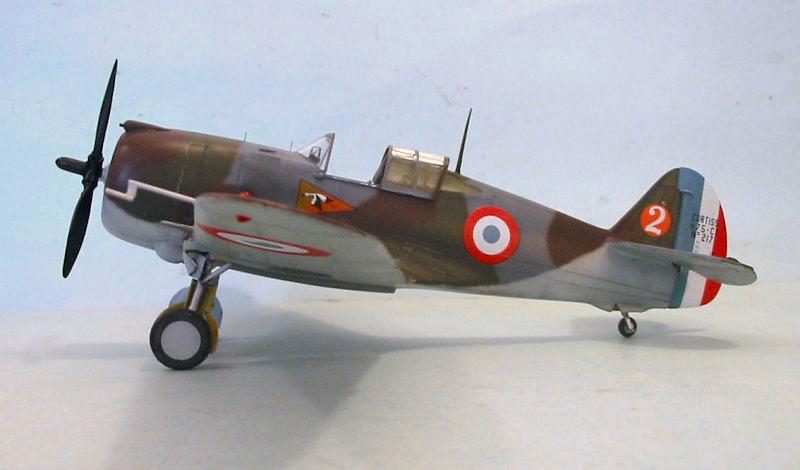
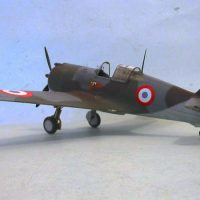
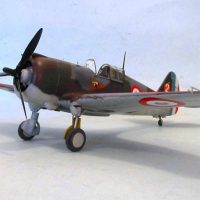
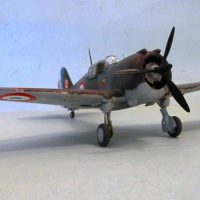
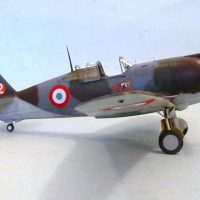
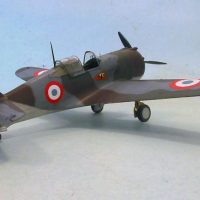
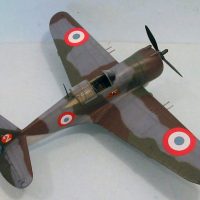

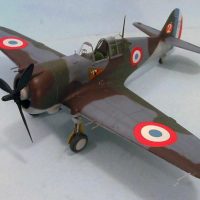
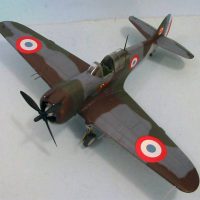
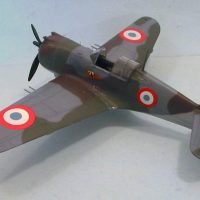
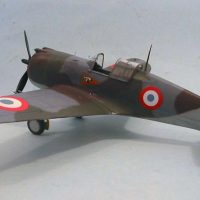
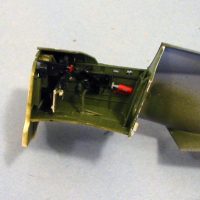
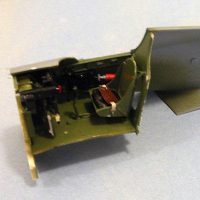
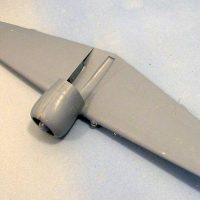
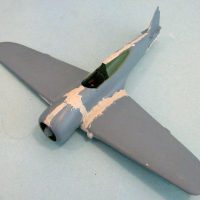

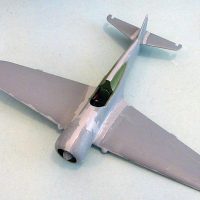
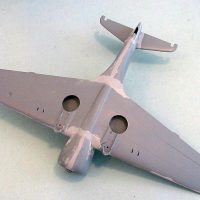
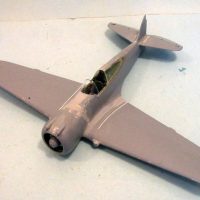
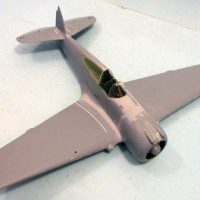
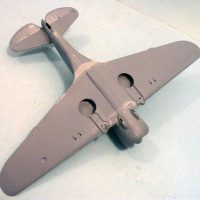
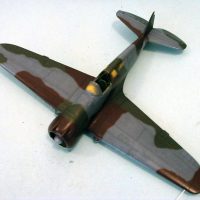
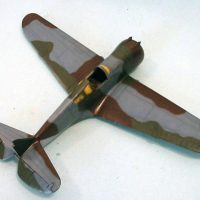
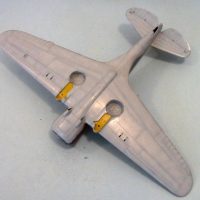
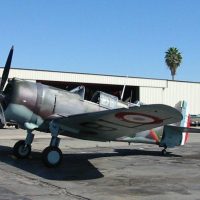
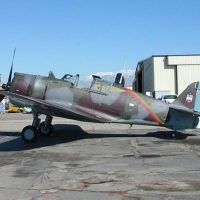
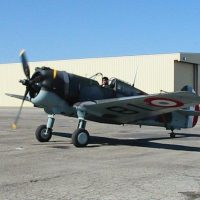
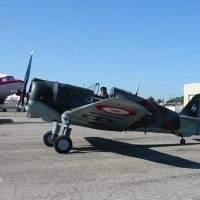
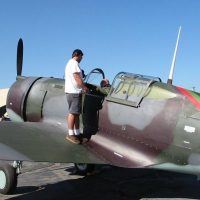
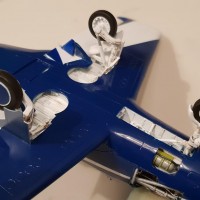
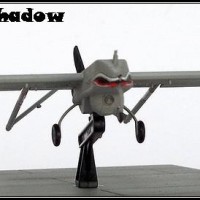

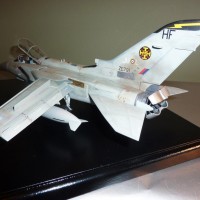
Very nice work using a tough kit...besides, we don't need any stinking putty?
beautiful
Looks great, Tom. A quality build, indeed ! Have you ever done one in the "war games" colors? I could never quite figure out what they were.
I have one set aside to do that. Lota lotsa masking...
Great model, great story.
Great build. Only kit on my shelf of doom is an Azur. More putty on it than an old Volkswagen..
Tom,
I like this in the French color scheme. I have never done a French airplane. For some reason i like the way they did them.